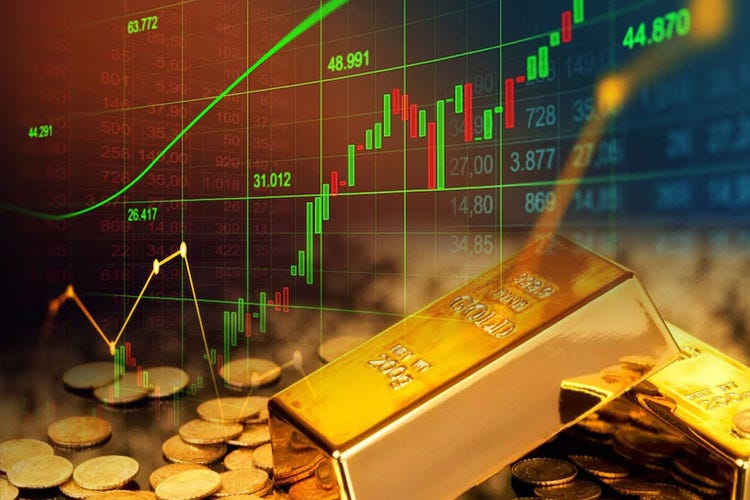Gold is one of the oldest and most trusted forms of wealth, and its trading remains a key interest for investors worldwide. In particular, the XAU/USD pair, which represents the price of gold against the U.S. dollar, is highly liquid and volatile. Whether you are a seasoned investor or a beginner in the world of trading, understanding the gold trading hours can have a significant impact on your strategy. By knowing the optimal times to trade, you can improve your chances of maximizing profits.
Why Gold is Popular Among Traders
Gold is often referred to as a “safe-haven” asset because, during times of economic uncertainty, it tends to hold or increase its value when other assets are declining. The XAU/USD pair is one of the most widely traded currency pairs, and it has specific trading hours influenced by global financial centers. These hours offer different conditions that can impact volatility, liquidity, and, ultimately, your ability to trade successfully.
Global Gold Trading Hours
Unlike stock markets, which are typically open for a fixed number of hours in a day, gold can be traded 24 hours a day, five days a week. This is due to its appeal as a global commodity and the continuous demand for it in various markets. Gold trading generally follows the opening times of major financial hubs.
1. Asian Trading Session – Tokyo
The Asian trading session begins at 00:00 GMT and runs until 09:00 GMT. While gold prices do not experience the same volatility as during the European or U.S. sessions, the Tokyo market does see some movement, especially when economic data from Japan or China is released. During this time, the market is more likely to reflect geopolitical tensions in Asia or fluctuations in commodity prices, as these factors influence the price of gold.
2. European Trading Session – London
The London trading session, which opens at 08:00 GMT, is the most active trading period for gold. The city is considered the financial hub of the world, and the London Bullion Market Association (LBMA) plays a significant role in setting the global price of gold. During this time, there is a great deal of market liquidity, and price movements tend to be more pronounced. This is often the best time for traders to enter the XAU/USD market, especially if you are looking for larger price swings.
3. U.S. Trading Session – New York
The New York market opens at 13:00 GMT, and for a few hours, the overlap between the London and New York sessions (13:00 GMT to 17:00 GMT) creates one of the most volatile periods for gold. Both European and U.S. investors are active, and there’s a greater likelihood of sharp price movements in response to economic data from the U.S., such as Non-Farm Payroll reports, Federal Reserve interest rate decisions, and inflation data. These can significantly influence the price of gold, making this time frame a popular window for traders.
4. Overlapping Trading Sessions
The overlap between the London and New York sessions (from 13:00 GMT to 17:00 GMT) is often considered the golden hour for gold trading. This is when the market sees the most activity, providing an opportunity for traders to capitalize on major price swings. During this time, the liquidity is high, and spreads are typically lower, which can enhance the overall trading experience.
Factors that Affect Gold Prices
Gold prices do not only respond to market demand and supply; they are also highly sensitive to geopolitical events, changes in interest rates, and fluctuations in the U.S. dollar. Here are some key factors that can affect the price of gold during each trading session:
- Interest Rates: When central banks, particularly the Federal Reserve, change interest rates, gold prices often respond. An interest rate hike can strengthen the U.S. dollar, making gold more expensive for holders of other currencies. Conversely, lower interest rates often weaken the dollar, causing gold prices to rise.
- Economic Reports: Data such as inflation reports, unemployment figures, and GDP growth can influence market sentiment. A weak U.S. economic report might lead to a flight to safety, boosting gold prices.
- Geopolitical Tensions: Gold is often viewed as a safe-haven asset during times of global instability. If tensions rise in regions like the Middle East or North Korea, you can expect an uptick in gold prices as investors flock to precious metals.
Risk Management Strategies
As with all trading, risk management is crucial when trading gold. Here are a few strategies to minimize risk during volatile trading hours:
- Stop-Loss Orders: Set a stop-loss to limit potential losses in case the market moves against your position. Given the volatility during certain trading hours, using stop-loss orders can prevent substantial losses.
- Position Sizing: Avoid risking more than a small percentage of your account balance on a single trade. This is particularly important in the gold market, where price swings can be large.
- Technical Analysis: Learn how to read price charts and use indicators to identify potential entry and exit points. Popular technical analysis tools for gold include moving averages, RSI, and Bollinger Bands.
- Fundamental Analysis: Keep an eye on economic news and reports that can influence gold prices. Key reports to monitor include U.S. Federal Reserve announcements and any geopolitical events that might lead to a flight to safe-haven assets like gold.
Conclusion
Understanding gold trading hours and the factors that affect gold prices can help you time your trades effectively. For many traders, the most lucrative trading hours are during the overlap between the London and New York sessions. By staying informed about global events and employing effective risk management techniques, you can enhance your chances of success when trading XAU/USD.










